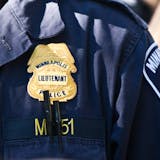An already heated debate over Question 2 became more so on Wednesday, as Minneapolis' police chief questioned whether residents would be any safer with the passage of the ballot measure that could dramatically change policing in the city.
His remarks set off an immediate frenzy, both privately in local political circles and on social media, where some questioned whether the chief violated ethics rules that forbid city officials from engaging in partisan campaigns.
Standing in full uniform against a backdrop featuring the department's logo, Chief Medaria Arradondo told reporters that he was never asked for input into the proposed charter amendment that would remove a minimum police staffing requirement, paving the way for a new "public health-oriented" agency that would send trained professionals to emergencies involving substance use, mental health and homelessness — while maintaining an unspecific number of armed "peace officers" to respond to violent crimes. But, Arradondo said, the amendment's proponents have never laid out a specific plan for addressing rising gun violence, in a city where four of every five shooting victims are Black.
At this point, he said, "frankly, I would take a drawing on a napkin."
Arradondo said that while he respected residents' constitutionally protected right to vote, he didn't believe the ballot measure would lead to a safer city, nor solve the current problems with policing.
Yes 4 Minneapolis, the political committee that crafted the proposal, released a statement critical of MPD and the city's approach to public safety.
"Minneapolis Police Chief Medaria Arradondo campaigning in uniform, in explicit contradiction of the policy he himself wrote last year, is one of many examples revealed in his press conference today, why structural change is imperative to keep the people of Minneapolis safe and to implement an accountable and transparent relationship with those who are called to protect and serve," said Yes 4 Minneapolis campaign manager Corenia Smith.
Susan Trammell, the city's ethics officer, had publicly warned elected officials earlier this year that they needed to be careful not to use government resources to advocate for or against the proposals that would come before voters this fall.



